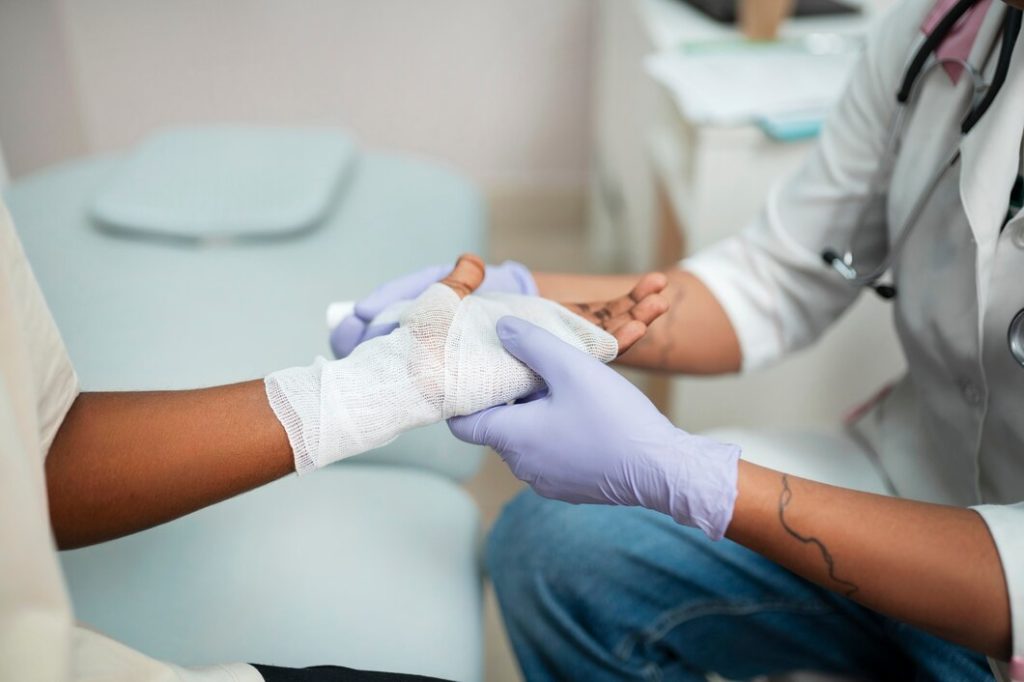Author: Mark Akinware

In a groundbreaking development for the medical field, researchers have pioneered a novel hydrogel that offers a much-needed solution to the increasing challenge of antibiotic resistance in wound care. This innovation not only tackles the growing concern of antibiotic-resistant bacteria but also supports cell regeneration, offering hope for patients suffering from chronic wounds.
The Rising Concern of Antibiotic Resistance in Wound Care
Antibiotic resistance is one of the most pressing global health issues today. In wound care, particularly for patients with chronic conditions like diabetes, the prolonged use of antibiotics can lead to drug-resistant infections. Traditional treatments often rely on topical antibiotics, which can initially be effective but lose their potency over time due to resistance. In fact, common antibiotics such as erythromycin, while useful in the early stages, eventually fail to relieve symptoms as the bacteria adapt and become resistant to treatment.
This growing issue has left many patients, especially those dealing with chronic, non-healing wounds, with limited options. Diabetic patients, in particular, are prone to wounds that do not heal easily, leaving them vulnerable to persistent infections that could worsen over time. This is where the new hydrogel innovation comes into play.
A Breakthrough in Hydrogel Technology
The team behind this breakthrough, led by Jing Sun, sought to address these challenges by developing a hydrogel that possesses inherent antibacterial properties while also promoting cell growth. Traditional hydrogels have been used in wound care for their water-retaining properties and biocompatibility. However, they often require the addition of antimicrobial agents to combat infections, which can inadvertently contribute to antibiotic resistance.
To overcome these limitations, the researchers enhanced the hydrogel composition by incorporating polylysine, a powerful amino acid with antibacterial properties, and platelet-rich plasma, which aids in cell regeneration. The result is a hydrogel that continuously releases polylysine onto the wound surface, effectively inhibiting bacterial growth without the need for traditional antibiotics.
Superior Wound Healing and Antibacterial Properties
One of the standout features of this hydrogel is its dual ability to fight bacteria and support cell proliferation. In experimental trials, the hydrogel was shown to effectively rupture the membranes of harmful bacteria such as E. coli and Staphylococcus aureus (S. aureus), leading to their destruction. At the same time, the inclusion of platelet-rich plasma stimulates the release of growth factors that promote healthy cell development, making the hydrogel a comprehensive solution for wound healing.
Importantly, this innovation addresses one of the key challenges in chronic wound care: the need to combat antibiotic resistance without hindering the body’s natural healing processes. The hydrogel’s unique formulation allows it to prevent bacterial infections while creating an environment conducive to cell regeneration, something that has been difficult to achieve with traditional antibiotic treatments.
Faster and More Efficient Application
In addition to its superior healing properties, the hydrogel also boasts a significant improvement in its application process. Traditional hydrogels often require lengthy freeze-thaw cycles that can take up to eight hours to prepare. In contrast, this new hydrogel can be cured under a UV lamp in just 30 seconds, allowing for faster and more efficient application in clinical settings. This is a game-changer for healthcare professionals, particularly when treating patients with severe or chronic wounds that require immediate attention.
The Future of Wound Care
Th lead researcher expressed optimism about the potential of this new hydrogel in clinical practice, particularly for patients with chronic infections and metabolic diseases such as diabetes.
“Patients with chronically infected wounds, combined with conditions like diabetes, malnutrition, and other diseases, as well as long-term bedridden patients, will be helped by this solution,” – Jing Sun
The implications of this breakthrough extend far beyond just treating wounds. By addressing the issue of antibiotic resistance in wound care, this hydrogel offers a glimpse into a future where we can treat infections without contributing to the growing global problem of drug resistance.
A Game-Changer for Global Health
With the development of this advanced hydrogel, the landscape of wound care is poised for significant transformation. Not only does it offer a solution to the rising issue of antibiotic resistance, but it also improves patient outcomes by supporting cell regeneration and faster wound healing. As antibiotic resistance continues to threaten global health, innovations like this hydrogel represent a critical step forward in our ability to manage and treat infections effectively.
Stay tuned to Innovation Corner for more updates on this and other groundbreaking advancements in healthcare.
Author: Mark Akinware
